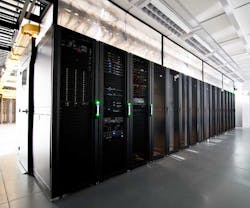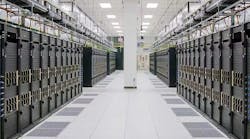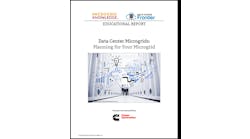Wyoming might seem an unusual place to launch a national data center network. Yet it’s been a gateway to larger ambitions for Green House Data, a data center and cloud services specialist that has gradually expanded beyond its initial facility in Cheyenne, Wyoming. The company now operates a network of seven data centers, with a footprint stretching from New York to Seattle.
Green House Data pursues both elements of “green” operations: sustainability and profitability. The company was founded in 2007 to operate data centers powered by renewable energy and operating at peak efficiency.
But Green House Data has also been opportunistic in expanding into new markets and new lines of business. While building a presence in Greater New York and the Pacific Northwest, the company has pushed into cloud, managed services and high-touch IT consulting, slowly building a roster of enterprise customers.
“Once we became a national player, more people paid attention, and more enterprises started finding us,” said Shawn Mills, the CEO, President and founder of Green House Data. “In an interesting way, growth begets growth. We’re talking to people from larger companies than we’ve ever talked to before. We’re now on their radar screen. We’re finding ourselves squarely in this hybrid IT market.”
Growing on Both Coasts
Green House Data launched with a 10,000 square foot data center in Cheyenne, supported by wind energy and the Wyoming climate, which is well suited to “free” cooling, which takes advantage of cool outside temperatures to keep servers cool. In 2013, the company teamed with 1547 Realty to build a second, larger data center on adjacent land. In those early years, the business focused on local customers and disaster recovery for out-of-region clients.
A corridor in a Green House Data facility, with an overhead cable tray. (Photo: Green House Data)
In 2012, Green House Data added locations on both coasts, leasing space in Piscataway, New Jersey for its East Coast presence, and opening a new West Coast facility in Portland, Oregon. It expanded its footprint in the New York market in 2014, again teaming with 1547 Realty on a project in Orangeburg, New York, about 25 miles north of Manhattan.
In 2015, Green House Data acquired FiberCloud, gaining three data centers in Washington state, including a presence in the Westin Building, Seattle’s primary carrier hotel.
Mills says the company continues to contemplate new markets. “We’re in acquisition mode, and we’re totally opportunistic,” he said. “We’re now spending a lot of time in the South.”
An Opportunity in ‘Human’ Cloud Support
Green House Data has expanded its service offerings as well, expanding beyond its initial focus on disaster recovery and HIPAA compliance for healthcare customers. Its primary business continues to be retail colocation, but it now offers a suite of “as a service” cloud offerings and managed services, with an emphasis on support.
That’s reflected in the company’s recent introduction of “Hear from a Human” support plans for cloud customers, offering a 15-minute response time guarantee as part of its Service Level Agreement.
Mills said the new service positions Green House as an alternative to the two largest cloud hosting providers, Amazon Web Services and Microsoft Azure, which both offered paid service tiers in which customers are charged a minimum $1,000 monthly fee to receive a one-hour response time for critical issues. In contrast, Green House Data says, its staff responds to phone inquiries immediately and web inquiries in 15 minutes as a matter of course.
“We wanted to formalize our service promise, which has always been free troubleshooting for any product we sell a customer,” said Thomas Burns, Green House Data VP of Business Development.
Focus on Service and Consulting
“There’s two ways you can go: the commodity route or the consulting and services route,” said Mills. “The pivots we just made into managed services and consulting are critical. We now have a pretty broad portfolio of services, and We’ve become more sophisticated in service delivery.”
The West Coast NOC (network operating center) for Green House Data. (Photo: Green House Data)
As part of that effort, Green House Data has built out a consulting group to work on-premises with clients and help them sort out the cloud opportunity. The company offers its VMware-based cloud platform in five data centers, and has also built an object storage offering.
“There’s a ton of demand in this market. The small companies are sticking closer to home,” said Mills, who said cloud technology offers “a really big opportunity to change their operating culture. Part of our competition is no decision.”
For all its growth, Green House Data continues to focus on sustainability. “Over the last year we’ve focused on making our Washington data centers more energy efficient,” said Mills. The company’s mission is reflected in its status as a B Corporation, meeting rigorous standards of social and environmental accountability.
“It was apparent that by being more energy efficient and by using green power, we had a way to both make our company stand out in the marketplace, make a true environmental impact, and build a great company,” said Mills. “Our last few years have been a lot of fun, seeing us evolve from a growth company to a more mature operation.”






